Less than a month left until the New Year.
If you don’t return your country at the end of this year but stay in Japan, try decorating for New Year in Japanese style to make the new year more exciting.
Basically, New Year decorations in Japan only require 3 main decorations: Kadomatsu gate, Shime Kazari decorative ring and Kagami Mochi cake.
“What is the meaning of these decorations?”
“How do Japanese people usually decorate them?”
“When does New Year decoration time in Japan start and end?”
If you also have similar questions, then definitely read this article.
This article will not only help you better understand how Japanese people welcome the New Year, but also help you confidently decorate your own home for New Year.
Now, let’s start decorating to start a lucky year.
New Year decorations in Japan (1) Kadomatsu gate
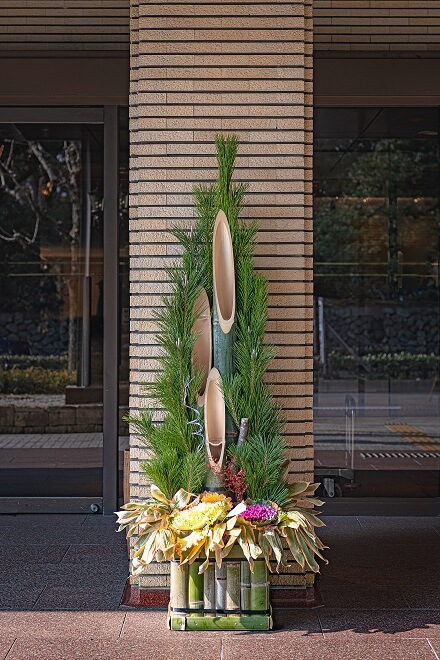
The first New Year decoration you should prepare is Kadomatsu (門松).
The word Kado (門) means “gate” and Matsu (松) means “pine tree”, so the literal meaning of Kadomatsu can be understood as “pine tree gate”.
Pine trees are inherently evergreen trees, with green leaves even in harsh winters, so in Japan since ancient times, pine trees have been considered a symbol of longevity and the strength to overcome adversity.
Kadomatsu is shaped like a plant pot, with 3 bamboo trees in the middle and many pine branches around.
Although bamboo is centrally located, pine branches are the most important component of Kadomatsu.
Kadomatsu is often placed in front of the house by Japanese people as a sign for God Toshigami – the god of the New Year – to locate your home and stop by to give blessings.
In shopping malls or corporate buildings, Kadomatsu are often placed in pairs on both sides of the entrance door.
However, Kadomatsu is not necessarily decorated in pairs.
In the case of a private house or apartment with limited space, Japanese people often only place one Kadomatsu in front of the door.
Entering December, flower shops in Japan will begin selling Kadomatsu in many sizes and prices.
Such as:
| Size | Place to put | Reference price |
|---|---|---|
| 10cm ~ 30cm | Dining table, Genkan hall | 1,000 yen ~ 2,000 yen/pair |
| 50cm ~ 70cm | Genkan Hall | 8,000 yen ~ 10,000 yen/pair |
| 100cm or more | In front of the house, Genkan hall | 20,000 yen ~ 40,000 yen/pair |
It doesn’t have to be a grand Kadomatsu. If you just want a simple decoration, you can choose to buy a Kadomatsu version with only pine branches, which is also very cozy.
This version of Kadomatsu is sold a lot in supermarkets at the end of the year for only a few hundred yen per bunch.
It’s cheap and easy to buy, so nowadays, many Japanese people like to decorate the New Year with Kadomatsu versions with only pine branches like this.
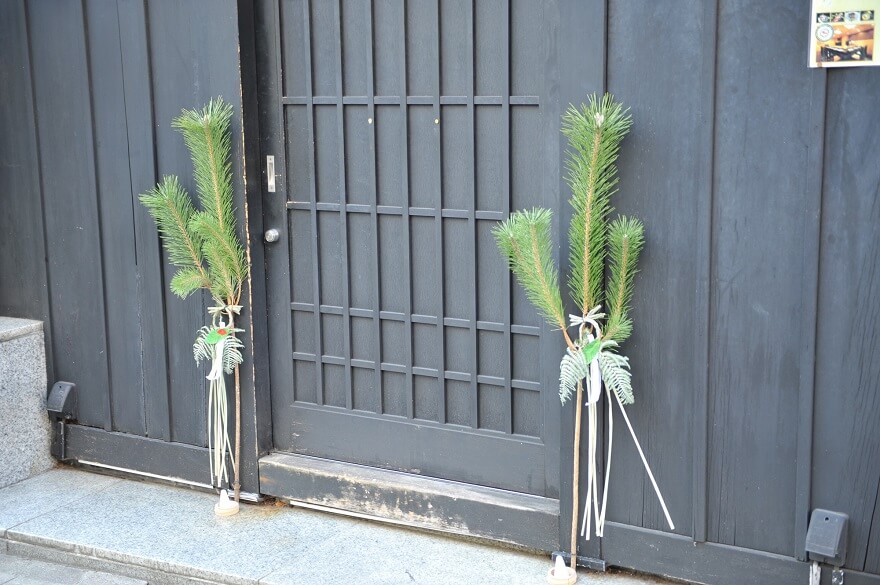
New Year decorations in Japan (2) Shime Kazari decorative rings
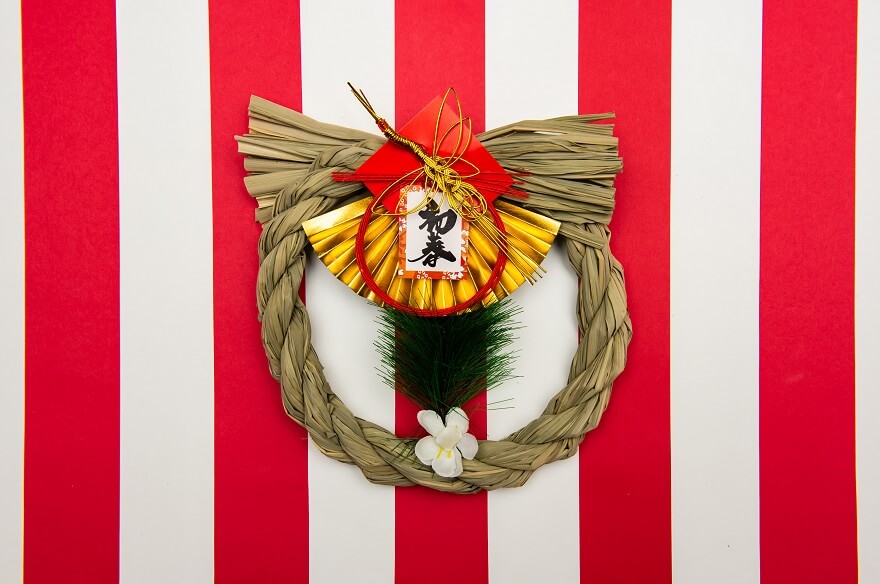
The next New Year decoration item is equally important, which is the Shime Kazari (しめ飾り) decorative bracelet.
Shime Kazari is unique in that depending on the locality, the shape and ingredients will vary.
But basically, Shime Kazari will consist of two main parts: the Shime Nawa rope and the lucky decoration.
1. Shime Nawa rope
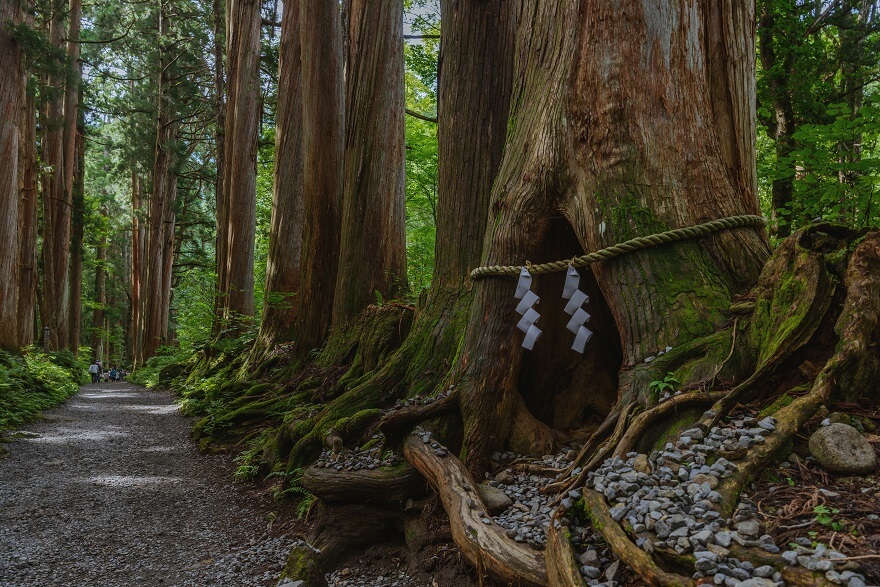
Shime Nawa rope is a rope made of straw or sedge.
Depending on the locality, Shime Nawa rope is made into many different shapes.
Most commonly seen in round shapes, Shime Nawa strings are sometimes also shaped into the shape of cranes or turtles – animals that symbolize longevity in Japanese culture.
In the Shinto religion, the Shime Nawa is used as a sign to delineate between the sacred area and the real world.
If you have ever been to a Shinto shrine (Jinja, 神社), you have probably seen Shime Nawa strings hanging at the temple gate or around ancient trees.
This is a sign intended to mark the place where the divine resides and evil spirits cannot enter.
2. Decorative objects that mean good luck

There are many items used as decorations that bring good luck to Shime Kazari.
The most popular include:
- Pine needles: symbolize longevity and endurance because no matter how harsh the weather is, pine needles remain green all year round.
- Daidai fruit (bitter orange): symbolizes lasting happiness because Daidai is a fruit that does not fall for many years.
- Fern leaf (Urajiro): symbolizes purity because the underside of the leaf is white, and also symbolizes marital harmony because the leaves grow symmetrically on both sides.
According to tradition, on New Year’s Day there must be two Shime Kazari decorations, one will be hung in front of the house, the other will be placed on the Shinto altar in the house.
However, because the number of houses with Shinto altars is decreasing, today, most people just hang a Shime Kazari decoration in front of the door.
From the beginning of December, you can see people selling Shime Kazari decorative bracelets everywhere.
Surely there is a supermarket near your house, so try looking for it.
New Year decorations in Japan (3) Kagami Mochi cakes
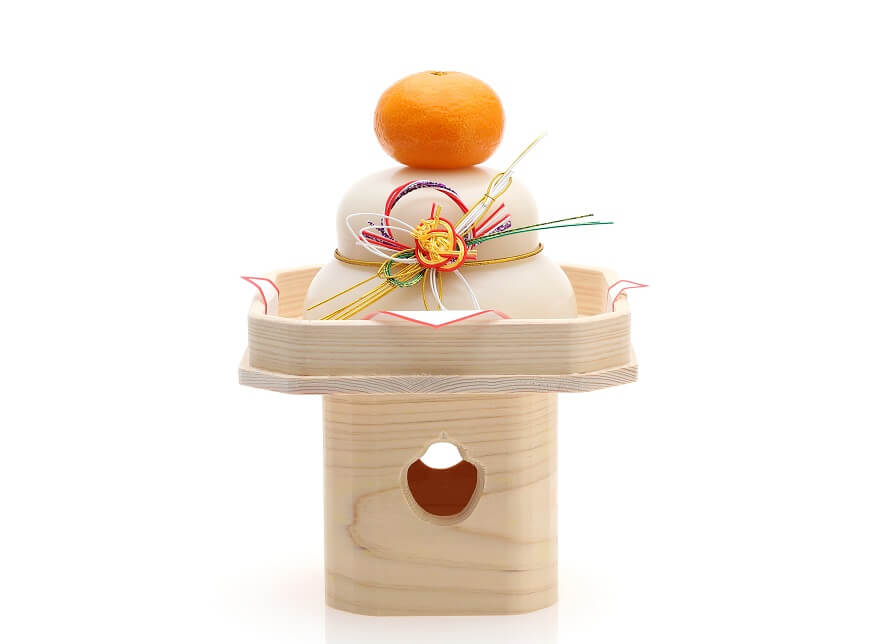
To complete the New Year decorations in Japan, don’t forget to prepare Kagami Mochi (鏡餅).
The word Kagami (鏡) means “mirror” and Mochi (餅) means “Mochi cake”, so the literal meaning of Kagami Mochi can be understood as “mirror Mochi cake”.
The reason for this name is because Mochi cake has a round shape similar to a bronze mirror – a sacred object in ancient Japan.
Kagami Mochi cake consists of 3 layers, with a large Mochi cake on the bottom, a smaller Mochi cake in the middle and a Daidai (bitter orange) on top.
Each floor has its own meaning.
The two Mochi cakes symbolize the moon and sun, yin and yang, luck and fortune.
The Daidai fruit has the meaning of wishing the whole family long-term happiness, because Daidai is a fruit that does not fall for many years but stays on the branch.
The Japanese believe that on the first day of the year, God Toshigami – the god of the new year – will come to each home to bestow blessings, and Kagami Mochi is said to be where his soul resides.
The interesting thing is that not only one Kagami Mochi cake, Japanese people often decorate many Kagami Mochi cakes at the same time, in many places in the house.
From the Genkan hall, the living room to the kitchen… wherever they believe God resides.
In Japan, since mid-November, supermarkets have started selling Kagami Mochi for only a few hundred yen.
Even in recent years, you can also find Kagami Mochi at 100 yen shops.
Note when decorating for New Year in Japan
Decorating for New Year in Japan is quite simple, but there are some things to keep in mind such as decoration time or how to handle decorations after New Year.
When does New Year decoration time in Japan start?
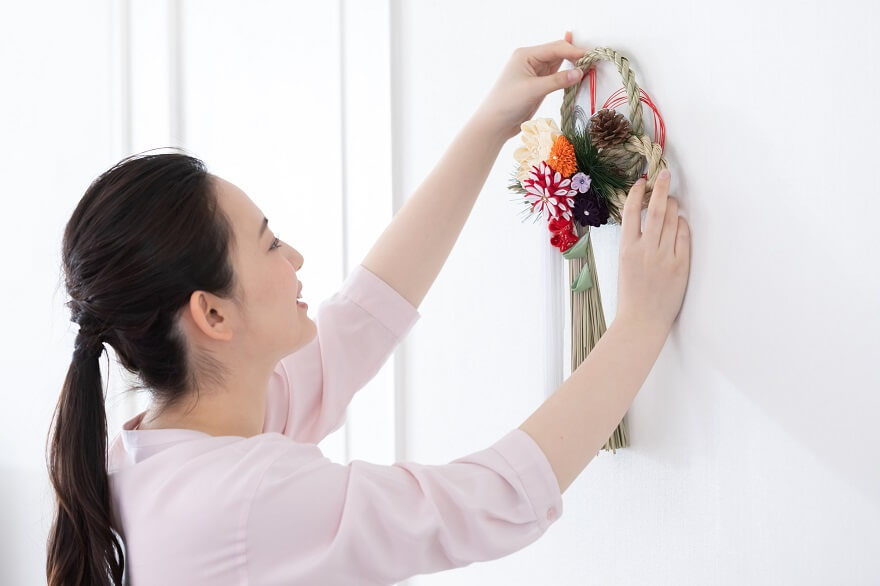
New Year decoration time in Japan usually starts from December 13.
If your house has Christmas decorations, you can decorate New Year right after Christmas ends, which is December 26.
December 29 and December 31 are two days when you should not decorate.
The reason to avoid the 29th day is because “29th day” (二十九) in Japanese is read as “Nijūku” – homophone with the word “twice suffering” (二重苦).
The reason to avoid the 31st is because the Japanese believe it would be rude to wait until New Year’s Eve to prepare to welcome the Gods. On the other hand, decorating on December 31st is synonymous with only ‘decorating for one night,’ evoking the tradition of burying the deceased through a funeral ritual in Japan, which is considered inauspicious.
For the above reasons, in Japan, many families often choose December 28 to start decorating for New Year.
When does the New Year decoration period in Japan end?
New Year decorations in Japan will end on January 7.
Depending on the region, the closing date may vary, but the latest is January 15.
On January 7, clean up the Kadomatsu gate and take down the Shime Kazari ornament.
As for Kagami Mochi cake, you can decorate it until January 11.
Kagami Mochi cake is completely edible, so don’t throw it away but boil it or bake it to eat.
Read more:
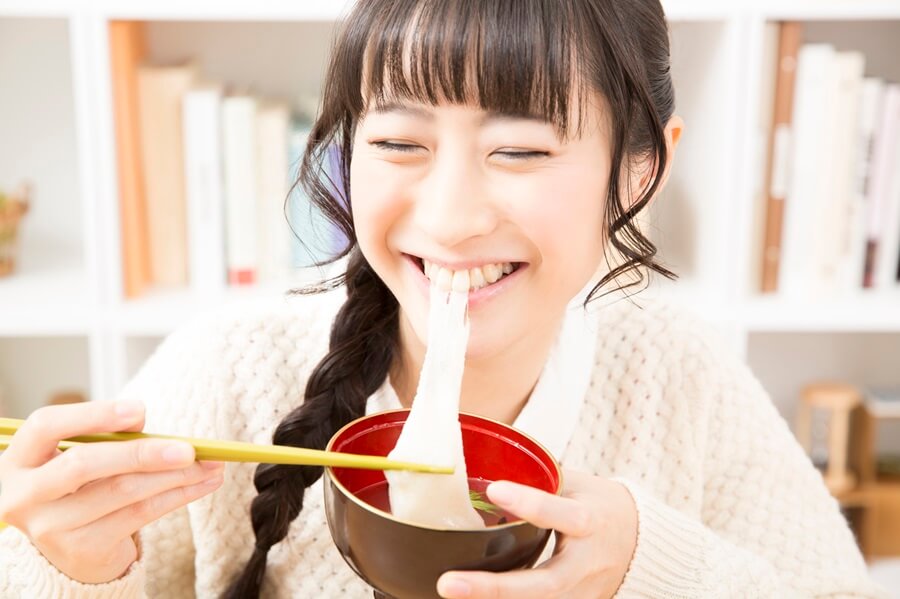
How to handle decorations after New Year in Japan
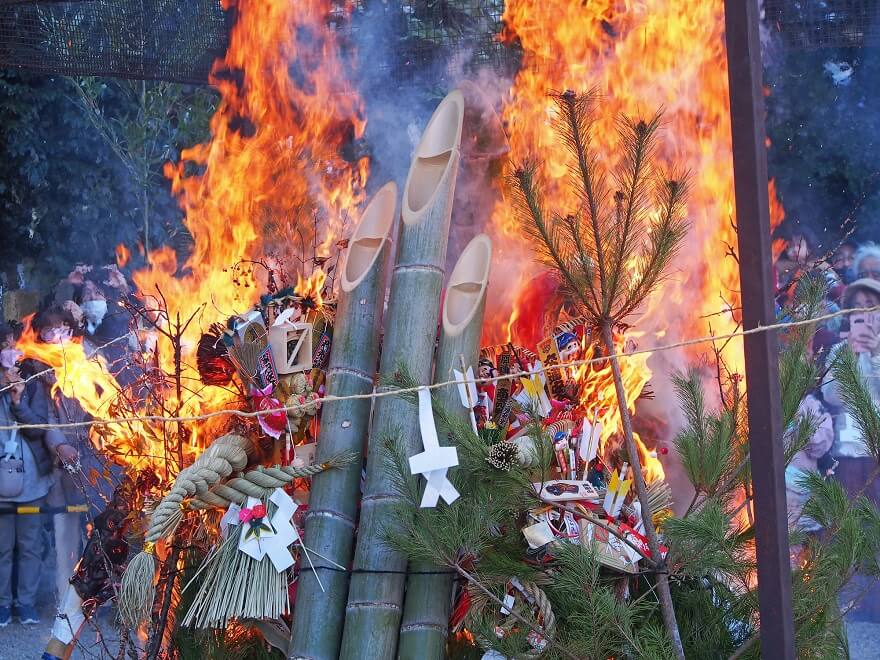
There are two ways to handle decorations after New Year in Japan.
- Bring it to the nearest temple to burn.
- Purify with salt (or alcohol) at home and throw away like regular trash.
On January 15, temples will hold the Dondo Yaki fire festival to burn New Year decorations.
This is the best way you can handle the Kadomatsu gate or Shime Kazari decorative ring.
Be sure to join to fully experience Japanese New Year culture.
In case you can’t go to the Dondo Yaki festival , you can also treat it yourself at home by sprinkling a little salt (or alcohol) on the Kadomatsu gate and Shime Kazari decorative ring to purify.
Wrap everything in newspaper and throw it away like regular trash (and don’t forget to sort your trash!).
Conclusion
So now, you understand why your neighbor puts pine pots or hangs rope rings in front of the house, right?
Kadomatsu gate, Shime Kazari decorative ring and Kagami Mochi cake, prepare these 3 items to decorate your home for New Year.
Gods will stop by and give blessings throughout the year.
Wishing you and your family a happy and healthy new year.

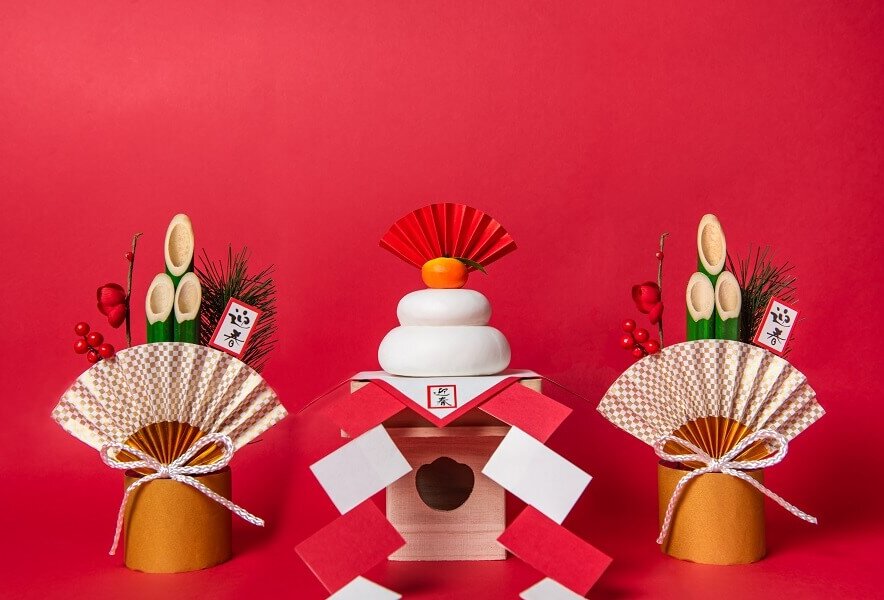


Comment